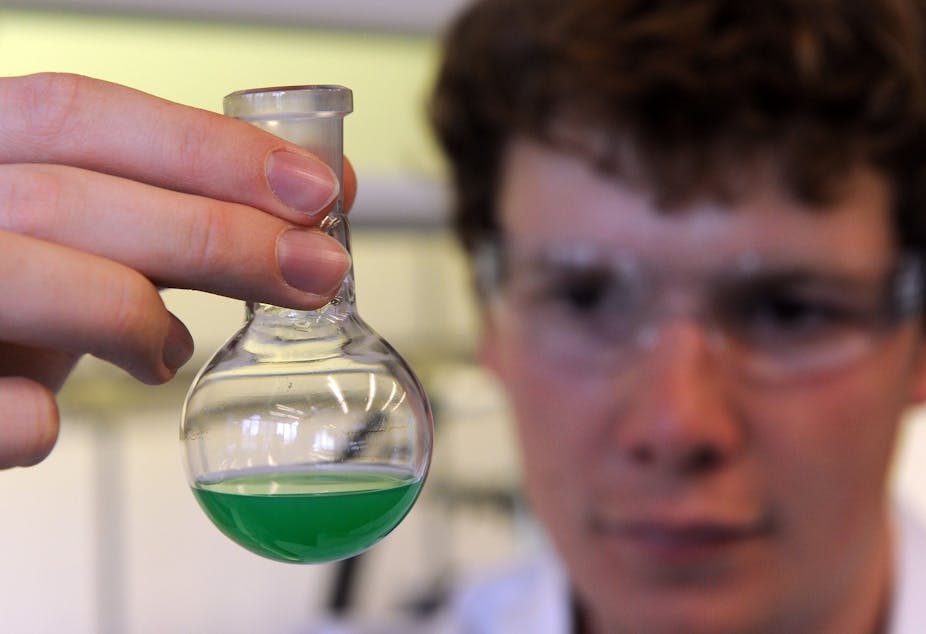The Gillard Government has reiterated its commitment to education in this year’s budget, and universities in particular.
Universities with regional campuses were the biggest winners, receiving $110 million.
The budget offered some useful investments in strategic projects, such as the square kilometre array (SKA) telescope and a boost to the CSIRO. There were also some useful tax incentives for small to medium enterprises (SMEs).
The general response from many vice chancellors was positive, perhaps more out of relief that it did not contain any serious cuts in research funding as had been feared.
However, there remain questions as to how effective these measures are in moving Australia forward.
The budget comes down at a time when Australia’s economy is facing significant challenges.
Australia survived the global financial crisis fairly well. However, there should be no complacency. Australia must prepare for an inevitable slowdown in demand for our resources.
Investment in major gas or mining projects is expected to peak around 2014-2015. The longer term growth outlook remains uncertain.
Australia must shift from being a “lucky country” to a “clever country”. We need to be more reliant on our brains and skills than what is in the ground.
To achieve this will require significant and ongoing investment in Australia’s National Innovation System (NIS).
This must recognise that more value comes from intellectual property (IP) rights to patents and trademarks than land or bulk commodities.
In 2010, Minister for Innovation, Industry, Science and Research, Senator Kim Carr, released a report on Australia’s NIS. This noted that gross expenditure on research and development (R&D) had grown strongly in recent decades.
The number of firms engaged in innovation had also grown. Yet problems remained with collaboration and strategic networking amongst small firms, as well as shortages of labour skills.
Seven national priorities were proclaimed along with targets for the next decade.
These included increasing the number of world class research groups within our universities, boosting the number of doctoral graduates, as well as expanding he level of collaboration between universities businesses and government R&D centres.
Significant boosts to innovation and collaboration levels within business, particularly small businesses were also targeted.
Scientific research and applied R&D lie at the heart of the NIS. The level of investment into these areas is therefore a key measure. Australia invests just over 2% of GDP on R&D.
It has some 8.5 full-time scientific researchers employed per thousand employees. Another key measure of our innovation is Business Expenditure on R&D (BERD), which in Australia is around 1.2%.
At first these percentages may seem low. However, they compare well with most other OECD nations. Our output of scientific articles per million people, and the proportion of tertiary educated workers are also good by world standards.
Total investment into R&D at a national level is in excess of $15.8 billion. The government sector provides 44% of this. The Federal Government is the main provider.
Private sector spending accounts for 48%. The remainder comes from international sources and providers such as private donations.
This R&D funding is distributed to a variety of recipients. However, 54% is used by the business sector.
The universities receive about 27%. This makes the higher education sector a major player in the NIS.
Universities generate valuable IP from their research. They also form a key part of Australia’s third largest export industry worth over $15 billion per year.
Two major reviews of the Australian NIS were undertaken in 2007 and 2008. The first review was by the Productivity Commission, the second by industry consultant and CSIRO board member Terry Cutler.
These reviews concluded that the system did not require radical overhauling in relation to either its overall funding or how the funding was allocated.
The Productivity Commission concluded: “The existing system, by and large, provides good returns for Australians and has, adapted to meet new challenges”.
However, they did identify problems. First, with how innovation and IP transfer is diffused within the economy. Second, they found problems over attracting and retaining high quality researchers.
Other concerns were a need for better targeting of funds. This included the effectiveness and efficiency of the Cooperative Research Centres (CRC) program, and the R&D Tax Concession scheme.
The ERA system of ranking universities raises many concerns. There are doubts over its accuracy, transparency and usefulness.
The ERA has effectively announced that 70% of Australian universities are performing below world’s best practice in research.
Kim Carr has also indicated that the ERA will be used to guide future university funding.
There are questions that should be asked of the ERA. Will it be used to back a small number of winners? Or will it be a mechanism for building up the under-performing areas?
Australia’s university sector operates in a highly competitive global market. Academics face pressure to publish in top-ranked journals, teach larger class loads and commercialise their research.
More must also be done to provide better job security and career planning for researchers, particularly post-doctoral graduates and early career researchers.
Too often the “soft money” from research grants cannot guarantee work beyond a few years. This can result in an outflow of talent.
A strong NIS needs well-funded universities and a strong entrepreneurial business sector. Better linkages between universities and small firms must be found.
SMEs make up 99.9% of all Australia’s businesses and employ 65% of the workforce. Such firms can make a significant contribution to innovation, but need access to world class transport and communications infrastructure, financing for R&D and a skilled workforce.
The higher education spending outlined in this year’s budget signal some positive steps from the government, but it should be part of a broader commitment to ensure that Australian universities can foster a smarter Australia.

